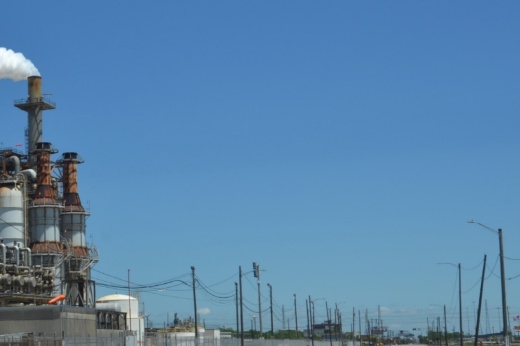In partnership with the U.S. Environmental Protection Agency, officials with the Houston-Galveston Area Council are preparing for the first phase of a 13-county regional climate action plan that aims to develop aggressive strategies, programs and policies over the next three years in order to reduce air pollution, emissions and greenhouse gases that are being emitted in the region.
How we got here
H-GAC was one of the entities chosen by the EPA in September to receive the Climate Pollution Reduction Grant, totaling $1 million in federal funds. Harris County Commissioners accepted roughly 28% of the federal funds or $238,750 from H-GAC at the Feb. 27 Commissioners Court.
Since September, officials said, a priority climate action plan went into development with the final plan being submitted to the EPA on March 1.
“This is definitely a big deal. The EPA has done something extraordinary offering all these funds to over 60-plus communities across the nation to activate them into making climate action plans,” said Pharr Andrews, H-GAC air quality principal planner.
The big picture
This comes as a new national air quality standard was announced Feb. 7 by the EPA that aims to lower the amount of fine particulate pollution emitted by power plants, vehicles and industrial facilities. Federal officials are saying the efforts are meant to better protect communities across the country from the dangerous and costly health effects of air pollution. There are 10 Texas counties that do not meet the revised annual levels based on 2020-22 air quality monitoring data from the EPA, including in the Austin, Dallas-Fort Worth and Houston areas.
While the H-GAC will be responsible for reporting to the EPA plan details for the 13-county region, officials will also be working with partner subrecipient agencies, including:
- Harris County
- City of Houston
- Fort Bend County
- Houston Advanced Research Center
Grant awardees will work toward a handful of environmental efforts that focus on:
- Reducing emissions
- Creating projects that benefit low-income and disadvantaged communities affected by the pollution
- Developing strategies to stimulate the green economy and create jobs
According to the H-GAC’s emission data from 2021, manufacturing and construction industries were the source behind 70% of the region’s greenhouse emissions.

The timeline
According to the H-GAC, the Climate Reduction Plan is divided into three phases over three years.
- First phase due March 1: The Priority Climate Action Plan—capture all the projects and strategies H-GAC and its partner agencies can accelerate in order to reduce greenhouse gases and other pollutants
- Second phase due September 2025: Comprehensive Climate Action Plan—more robust planning effort focused on community engagement
- Third phase due summer-fall 2027: Status report—continual improvement efforts to see if plans are working or if not and recalibrate if necessary
Get involved
Residents who want to learn more about the region's three-year climate action plan and weigh-in on how H-GAC should adapt its various strategies are invited to comment at H-GAC's community involvement website.
The climate action plan's regional strategies are divided into five sectors:Also of note
Houston's climate action plan launched in April 2020. The plan stated that Houston has one of the highest per capita greenhouse gas emissions in the country, largely due to high emissions caused from transportation.
A poll on the H-GAC climate action plan website shows that 50% of voters would like to see a reduced number of vehicle miles traveled, 25% voted for an increase in deployment of electric vehicles, and another 25% voted for alternative commute infrastructure.





